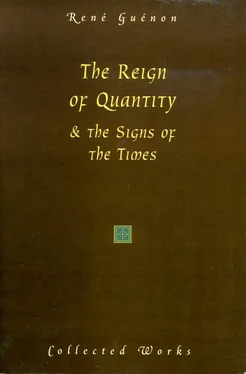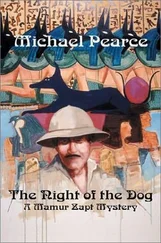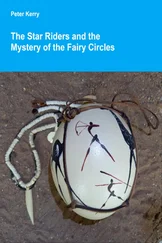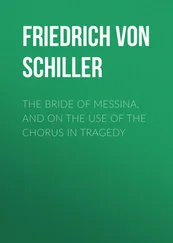It may easily be observed, provided only that one has ‘eyes to see’, that the ancient coins are literally covered with traditional symbols, often chosen from among those that carry some particularly profound meaning; thus for instance it has been observed that among the Celts the symbols figured on the coins can only be explained if they are related to the doctrinal knowledge that belonged to the Druids alone, which implies a direct intervention of the Druids in the monetary domain. There is not the least doubt that the truth in this matter is the same for the other peoples of antiquity as for the Celts, of course after taking account of the modalities peculiar to their respective traditional organizations. This is fully in agreement with the fact of the inexistence of the profane point of view in strictly traditional civilizations: money itself, where it existed at all, could not be the profane thing it came to be later; and if it had been so, how could the intervention of a spiritual authority, which would then obviously have no concern with money, be explained, and how would it be possible to understand that many traditions speak of coinage as of something really charged with a ‘spiritual influence’, the action of which could not become effective except by means of the symbols that constituted its normal ‘support’? It may be added that right up to very recent times it was still possible to find a last vestige of this notion in devices of a religious character, which certainly retained no real symbolical value, but were at least something like a recollection of the traditional idea, more or less uncomprehended thenceforth; but after having been relegated in certain countries to a place round the rim of coins, in the end these devices disappeared completely; indeed there was no longer any reason for them as soon as the coinage represented nothing more than a ‘material’ and quantitative token.
The control of money by the spiritual authority, in whatever form it may have been exercised, is by no means exclusively confined to antiquity, for without going outside the Western world, there is much to indicate that it must have been perpetuated until toward the end of the Middle Ages, that is, for as long as the Western world had a traditional civilization. It is impossible to explain in any other way the fact that certain sovereigns were accused at this time of having ‘debased the coinage’; since their contemporaries regarded this as a crime on their part, it must be concluded that the sovereigns had not the free disposal of the standard of the coinage, and that, in changing it on their own initiative, they overstepped the recognized rights of the temporal power. [47] See Spiritual Authority and Temporal Power , where the case of Philip the Fair is specially referred to, and where it was suggested that there may be a fairly close connection between the destruction of the Order of Templars and the alteration of the coinage, something easily understood if it is recognized as at least very plausible that this Order then had the function, among others, of exercising spiritual control in this field; the matter need not be pursued further here, but it may be recalled that the beginning of the modern deviation properly so called has been assigned precisely to this moment.
If that were not the case, such an accusation would have been quite without meaning; the standard of the coinage would only then have had an importance based on convention, and it would not have mattered, broadly speaking, if it had been made of any sort of metal, or of various sorts, or even been replaced by mere paper as it is for the most part today, for this would have been no hindrance to the continuance of exactly the same ‘material’ employment of it. An element of another order must therefore have been involved, and it must have been of a superior order, for unless that had been the case the alteration could not have assumed a character so exceptionally serious as to end in compromising the very stability of the royal power; but the royal power by acting in this way usurped the prerogatives of the spiritual authority, which is without any doubt the one authentic source of all legitimacy. In this way the facts, which profane historians seem scarcely to understand, conspire once more to indicate very clearly that the question of money had in the Middle Ages as well as in antiquity aspects quite unknown to the moderns.
What has happened in this case is but an example of a much more general movement, affecting all activities in every department of human existence; all have been gradually divested of any ‘sacred’ or traditional character, and thereby that existence itself in its entirety has become completely profane and is now at last reduced to the third-rate mediocrity of ‘ordinary life’ as it is found today. At the same time, the example of money clearly shows that this ‘profanization’ — if any such neologism be allowable — comes about chiefly by the reduction of things to their quantitative aspect alone; indeed, nobody is able any longer to conceive that money can represent anything other than a simple quantity; but, although the case of money is particularly apt in this connection because it has been as it were carried to the extreme of exaggeration, it is very far from being the only case in which a reduction to the quantitative can be seen as contributing to the confining of existence within the limited horizon of the profane point of view. This is sufficiently understandable after what has been said of the peculiarly quantitative character of modern industry: by continuously surrounding man with the products of that industry, and so to speak never letting him see anything else (except, as in museums for example, in the guise of mere ‘curiosities’ having no relation with the ‘real’ circumstances of his life and consequently no effective influence on it), he is really compelled to shut himself up inside the narrow circle of ‘ordinary life’, as in a prison without escape. In a traditional civilization, on the contrary, each object was at the same time as perfectly fitted as possible to the use for which it was immediately destined and also made so that it could at any moment, and owing to the very fact that real use was being made of it (instead of its being treated more or less as a dead thing as the moderns do with everything that they consider to be a ‘work of art’), serve as a ‘support’ for meditation, linking the individual with something other than the mere corporeal modality, thus helping everyone to elevate himself to a superior state according to the measure of his capacities: [48] Numerous studies by A. K. Coomaraswamy may be consulted on this subject, which he has developed profusely and ‘illustrated’ in all its aspects with all necessary explanations.
what an abyss there is between these two conceptions of human existence!
The qualitative degeneration of all things is closely linked to that of money, as is shown by the fact that nowadays the ‘worth’ of an object is ordinarily ‘estimated’ only in terms of its price, considered simply as a ‘figure’, a ‘sum’, or a numerical quantity of money; in fact, with most of our contemporaries, every judgment brought to bear on an object is nearly always based exclusively on what it costs. The word ‘estimate’ has been emphasized because it has in itself a double meaning, qualitative and quantitative; today the first meaning has been lost to sight, or what amounts to the same thing, means have been found to equate it to the second, and thus it comes about that not only is the ‘worth’ of an object ‘estimated’ according to its price, but the ‘worth’ of a man is ‘estimated’ according to his wealth. [49] The Americans have gone so far in this direction that they commonly say that a man is ‘worth’ so much, intending to convey in that way the figure to which his fortune has risen; they say too, not that a man has succeeded in his affairs, but that he ‘is a success’, and this is as much as to identify the individual completely with his material gains.
The same thing has naturally happened to the word ‘value’, and it may be noticed in passing that on this is based a curious abuse of the word by certain recent philosophers, who have even gone so far as to invent as a description of their theories the expression ‘philosophy of values’; underlying their thoughts is the idea that everything, to whatever order it may belong, is capable of being conceived quantitatively and expressed numerically; and ‘moralism’, which is their other predominant preoccupation, thus comes to be closely associated with the quantitative point of view. [50] This association, by the way, is not an entirely new thing, for it actually goes back to the ‘moral arithmetic’ of Bentham, which dates from the end of the eighteenth century.
These examples show too that there has been a real degeneration of language, inevitably accompanying or following that of everything else; indeed, in a world in which every attempt is made to reduce all things to quantity it is evidently necessary to use a language that itself evokes nothing but purely quantitative ideas.
Читать дальше











